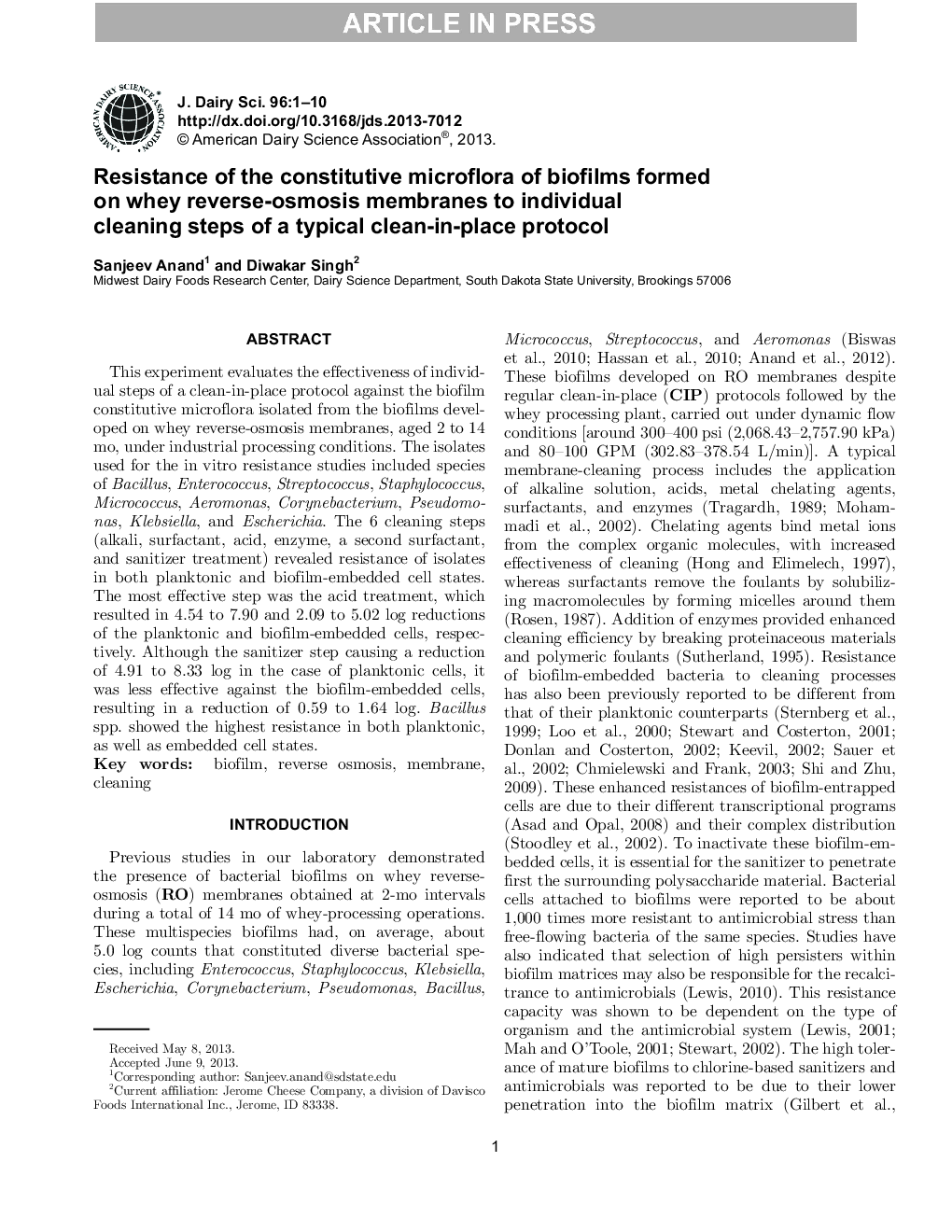| Article ID | Journal | Published Year | Pages | File Type |
|---|---|---|---|---|
| 10975883 | Journal of Dairy Science | 2013 | 10 Pages |
Abstract
This experiment evaluates the effectiveness of individual steps of a clean-in-place protocol against the biofilm constitutive microflora isolated from the biofilms developed on whey reverse-osmosis membranes, aged 2 to 14Â mo, under industrial processing conditions. The isolates used for the in vitro resistance studies included species of Bacillus, Enterococcus, Streptococcus, Staphylococcus, Micrococcus, Aeromonas, Corynebacterium, Pseudomonas, Klebsiella, and Escherichia. The 6 cleaning steps (alkali, surfactant, acid, enzyme, a second surfactant, and sanitizer treatment) revealed resistance of isolates in both planktonic and biofilm-embedded cell states. The most effective step was the acid treatment, which resulted in 4.54 to 7.90 and 2.09 to 5.02 log reductions of the planktonic and biofilm-embedded cells, respectively. Although the sanitizer step causing a reduction of 4.91 to 8.33 log in the case of planktonic cells, it was less effective against the biofilm-embedded cells, resulting in a reduction of 0.59 to 1.64 log. Bacillus spp. showed the highest resistance in both planktonic, as well as embedded cell states.
Related Topics
Life Sciences
Agricultural and Biological Sciences
Animal Science and Zoology
Authors
Sanjeev Anand, Diwakar Singh,
